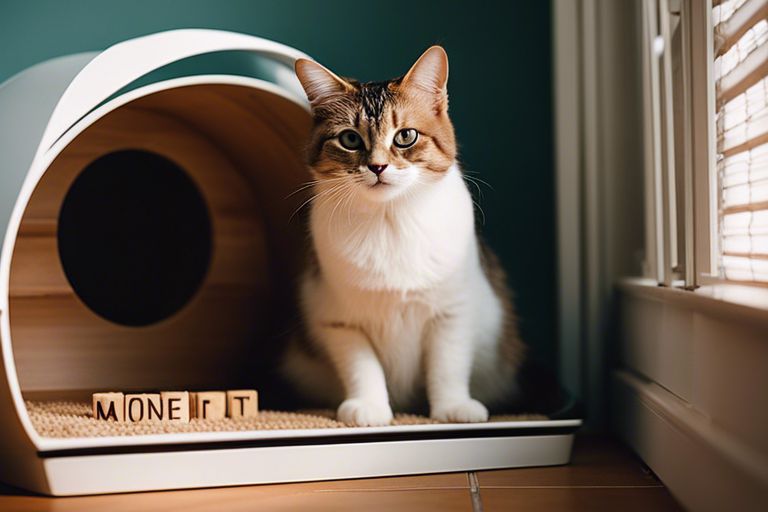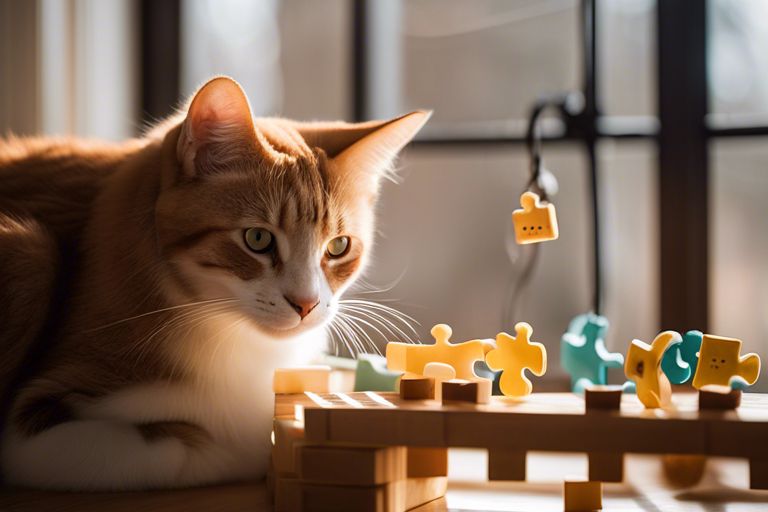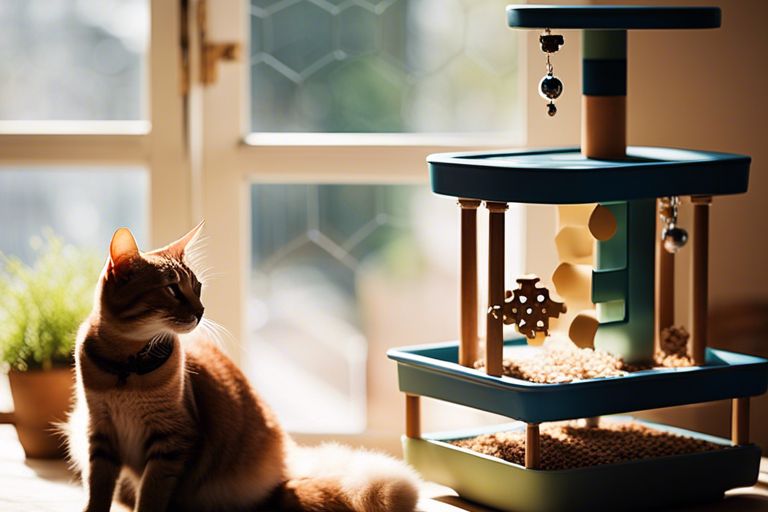Have you ever wondered how you can train your cat to be more independent when you are not around? Cats are known for their independent nature, but it is important to ensure they are safe and secure when you are not able to be with them. In this blog post, we will discuss some essential tips and tricks to help your feline friend become more self-reliant and confident when you are away. From creating an enriching environment to establishing a routine, we’ve got you covered. Let’s dive in and empower your cat to thrive on their own!
Key Takeaways:
- Gradual training: Training your cat to be more independent when you’re not home takes time and patience. Start with short periods of time away and gradually increase the duration to help your cat adjust.
- Enriching environment: Providing your cat with an enriching environment, including toys, scratching posts, and interactive food puzzles, can help keep them entertained and engaged while you’re not home.
- Establishing routines: Cats thrive on routine, so establishing a consistent schedule for feeding, playtime, and alone time can help your cat feel more secure and less anxious when you’re not home.
- Comfortable resting areas: Creating comfortable and cozy resting areas for your cat, such as soft blankets or beds, can help them feel at ease and relaxed while you’re away.
- Positive reinforcement: Using positive reinforcement, such as treats and praise, when your cat exhibits independent behavior can encourage them to continue this behavior when you’re not home.


Creating a Safe and Stimulating Environment
While you’re away, it’s important to make sure your cat has a safe and stimulating environment to spend their time in. This will help keep them occupied and prevent boredom and anxiety.
The Essentials of a Cat-Friendly Home
Make sure your home is cat-friendly by providing essential items such as a cozy bed, scratching posts, and interactive toys. Additionally, ensure that there are no hazards such as toxic plants or small objects that your cat could swallow.
Advanced Strategies for Mental Stimulation
If you want to go the extra mile in providing mental stimulation for your cat, consider incorporating these advanced strategies:
- Interactive toys: Provide toys that dispense treats or require your cat to solve puzzles to access the treats.
- Perches and cat trees: Install perches and cat trees to give your cat vertical space to explore and observe their surroundings.
- Window access: Create a window perch or cat-friendly window enclosure so your cat can watch the outside world.
Establishing Routines and Boundaries
After bringing your cat home, it’s important to establish routines and boundaries to help them become more independent. Cats thrive on routine, so creating consistent feeding, play, and rest times will help them feel secure and confident when you’re not around. Additionally, setting boundaries for where your cat can explore and play will help prevent any destructive behaviors when you’re away.
The Power of Consistency in Training
Consistency is key when training your cat to be more independent. When creating routines, it’s important to stick to them as closely as possible. Whether it’s feeding times, play sessions, or designated rest areas, consistency will help your cat understand what to expect and when. This will help them feel more secure and confident when left alone.
Setting Limits and Rules for Independent Play
When it comes to independent play, setting limits and rules is essential. Make sure your cat has access to stimulating toys and activities to keep them entertained while you’re not home. However, it’s important to establish boundaries for where they can play to prevent any damage to your belongings. Providing a variety of engaging toys and play areas will help satisfy their natural instincts and prevent boredom.
Behavioral Training Techniques
Now that you understand the importance of training your cat to be more independent, let’s discuss some behavioral training techniques to help you achieve this goal. For more in-depth information on the topic, you can refer to 8 Cat-Lady Approved Tips For Leaving Your Cat At Home.
Positive Reinforcement and Reward Systems
One effective way to train your cat to be more independent is through positive reinforcement and reward systems. Whenever your cat displays independent behavior, such as playing with toys or lounging in a favorite spot while you’re not at home, be sure to reward them with treats or verbal praise. This will reinforce the desired behavior and encourage them to continue being independent, even when you’re away.
Addressing Separation Anxiety and Building Confidence
If your cat experiences separation anxiety when you’re not home, it’s essential to address this issue in order to help them become more independent. Spend time building their confidence through interactive play, environmental enrichment, and providing them with a comfortable and safe space to relax in. By addressing their anxiety and boosting their confidence, you can help them feel more secure and content when you’re not around.

Monitoring Progress and Making Adjustments
To ensure that your cat is making progress in becoming more independent when you’re not home, it’s important to monitor their behavior and make any necessary adjustments to your training methods. This will help you gauge whether your efforts are working and address any challenges that may arise.
Recognizing Signs of Progress in Your Cat
As you continue to train your cat to be more independent, look for signs of progress such as decreased anxiety when you leave the house, spending more time entertaining themselves with toys or activities, or maintaining litter box habits in your absence. These are all positive indicators that your cat is becoming more comfortable and confident being alone.
Trouble-Shooting Common Challenges
If you notice that your cat is experiencing increased anxiety or displaying destructive behavior when you’re not home, it may be necessary to adjust your training approach. Additionally, if your cat is resisting the use of interactive toys or other methods to keep them occupied, you may need to try different options or seek the help of a professional trainer to address these challenges.
Training Your Cat to Be Independent When You’re Not Home
Conclusively, training your cat to be more independent when you’re not home is possible with consistency and patience. By providing your cat with stimulating toys, creating a safe and comfortable environment, and gradually increasing the time you are away, you can help your cat build confidence and self-reliance. Remember to also establish a predictable routine for feeding, playtime, and attention to help your cat feel more secure and less reliant on your constant presence. Through positive reinforcement and gradual adjustments, your cat can become more independent and content when you’re not home.
FAQ
Q: How can I train my cat to be more independent when I’m not home?
A: Cats are independent by nature, but there are ways you can help them become more self-sufficient when you’re away. Providing interactive toys, setting up feeding stations, and creating a stimulating environment can all help your cat feel more comfortable on their own.
Q: What interactive toys can I use to keep my cat engaged while I’m not home?
A: Interactive toys, such as puzzle feeders, laser pointers, and automated toys, can provide mental and physical stimulation for your cat. These toys can help keep your cat entertained and can mimic the hunting and playing activities they would engage in if you were home.
Q: How can I create a stimulating environment for my cat to encourage independence?
A: Creating a stimulating environment for your cat can include providing scratching posts, vertical space to climb, and hiding spots. Additionally, leaving out items with your scent, such as a worn t-shirt, can help comfort your cat while you’re away. Ensuring there are comfortable resting spots and access to natural light can also make your cat feel more at ease when home alone.

Jayley, a devoted cat enthusiast, also writer for other cat blog as well. She aims to dedicated to providing comprehensive information, insights, and advice on everything you’d ever want to know about our whiskered companions.
